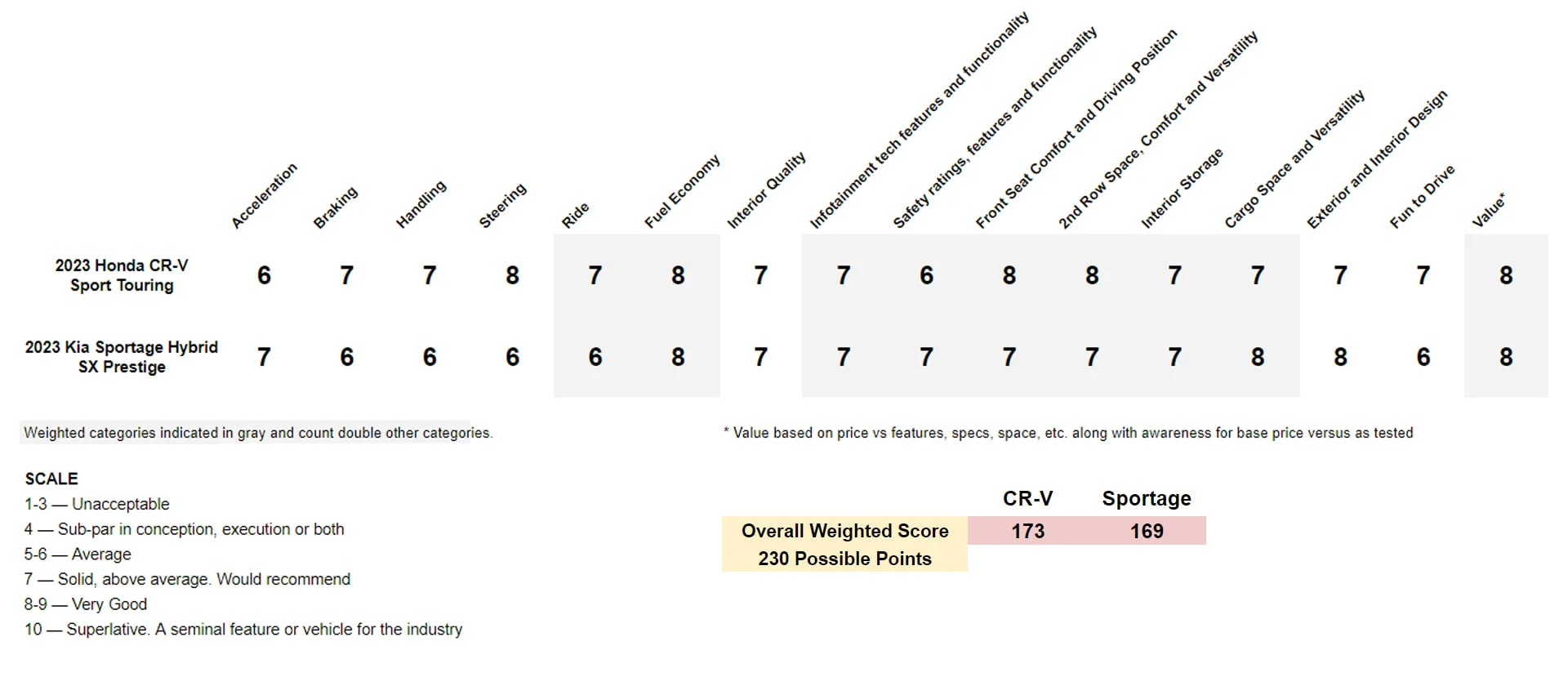Honda CR-V vs Kia Sportage: Compact hybrid SUV comparison test
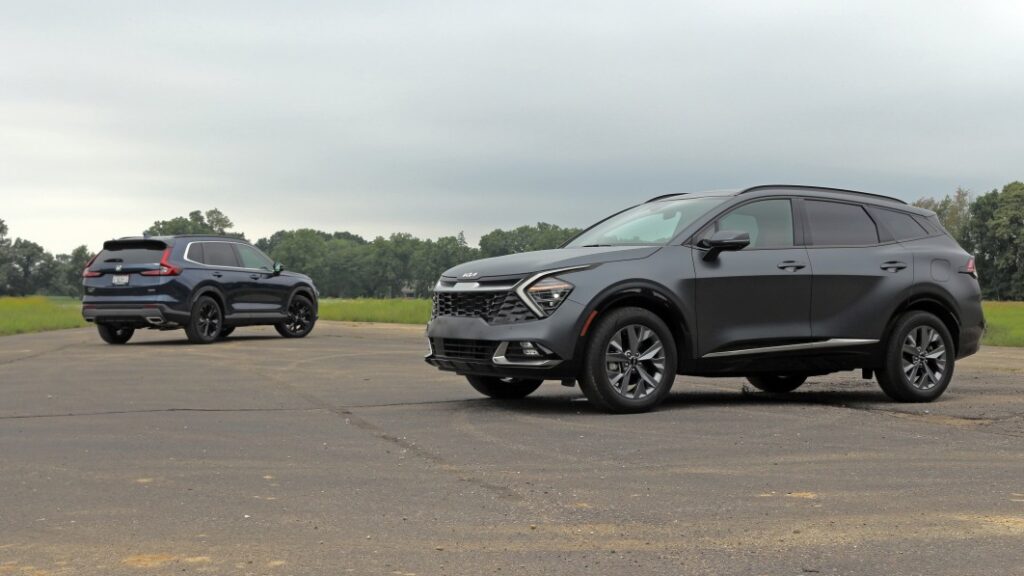
A great deal of thought went into the 2023 Honda CR-V and 2023 Kia Sportage, and in each case, we’ve determined that the best variant to drive is the Hybrid. We’ve given both excellent marks and would unquestioningly recommend them to prospective buyers, but if you’ve narrowed the market this far and still struggling to choose, which one is ultimately the right call? Well, settle in, because we’ve got an answer.
The compact crossover SUV segment is huge. Honda sold 238,000 CR-Vs in 2022 — almost as many as Civic and Accord combined. Kia moved a far more modest 125,200 Sportages in the same time period. Like the midsize sedan of yore, it’s the segment in which virtually every automaker competes; to not do so is to relegate oneself to the margins of the modern automotive market. Where the Accord and [whatever Kia was calling it that week] once reigned, the compact crossover has cemented a new dynasty, and the CR-V and Sportage families rule their builder’s respective roosts.
These two have virtually everything in common. They’re available in both gas-only and hybrid variants; they seat five; they’re even dimensionally identical for the most part. In a blind reading of basic stats, you’d be hard-pressed to tell them apart. The Kia is more powerful and is offered with an even-punchier plug-in powertrain, while the Honda leans a bit more conservative. This test was tight — really tight. After Autoblog Electric Editor John Snyder and I spent the day putting each through its paces, the winner and loser were determined by single digits in a scoring system that could produce a weighted total of 160 points. Read on to see exactly how each shaped up.
Second Place: 2023 Kia Sportage Hybrid SX Prestige
While the CR-V comes in both hybrid and standard flavors, Kia offers the Sportage in three permutations. This, the “vanilla” hybrid, represents the middle; there’s a gasoline-only entry beneath it and a plug-in option above it. Neither concerns us today, but hey, choice is good.
One could forgive Kia for offering a bland hybrid to encourage more shoppers to spring for the pricier PHEV, but such is not the case. The Sportage Hybrid packs 227 horsepower and 258 pound-feet of torque (+23 horses and 11 pound-feet over the Honda) and with EPA fuel economy estimates of 38 mpg straight across the board (city, highway and combined), may even be situationally more efficient than the CR-V, which tops out at 34 mpg highway and 37 combined.
As you might suspect, the Kia packs a far mightier punch than the Honda, with solid low-end grunt and plentiful passing power even at highway speeds thanks to the presence of not only an electric motor but a turbocharger as well. That extra oomph doesn’t really translate to excitement, however. The Kia’s six-speed automatic transmission, likewise, is simply there, though we suspect it contributes to one of our small gripes: While the brakes feel plenty substantial, stops and starts are a bit awkward. The Sportage bucks perceptibly (though not aggressively) in stop-and-go driving. The Sportage’s gearbox is also quite eager to chase higher gears, leading to particularly low revs and the occasional, distant four-cylinder drone in city driving.


At speed, the Kia’s finicky throttle/brake relationship is quickly forgotten; it’s all about the chassis here. On a winding road, the Sportage feels a bit ponderous. “Feels hefty, and a little nose-heavy, but the AWD helps with cornering stability,” Snyder notes. Overall, the Sportage feels over-dampened and under-sprung. It’s able to soak up some severe pavement defects at speed without rattling your teeth, but as a trade-off, you’re in for quite a ride. You won’t feel the sharp impacts as much as you do in the CR-V, but you’ll be able to identify every bit of excess fat stored in your body with every bob and jiggle.
Kia’s greatest edge here is in driver assistance tech. Kia’s Highway Drive Assist (not to be confused with the more advanced HDA2 offered in other Hyundai Group models) does a better job than Honda’s included suite, and even its basic assist functions are less intrusive. I could personally do without most of the gimmicks being incorporated into Hyundai and Kia’s newer driver safety suites (cruise control curve assist? Come on) but the bulk of the tech is tolerable and dependable.
From the city to the open road and the divided interstate, one element of the Kia’s personality stood out the most: Everything seems to happen a half-step removed from the driver. There’s a distance to it all — the almost nonexistent exhaust note, the more-isolated ride, the constant notion that there’s more heft to the car than its feedback lets on. But the upside to that isolation is that the Sportage presents a bit more robustly, as if it might provide a more effective cocoon between you and the outside world. And that’s where the cabin comes into play.

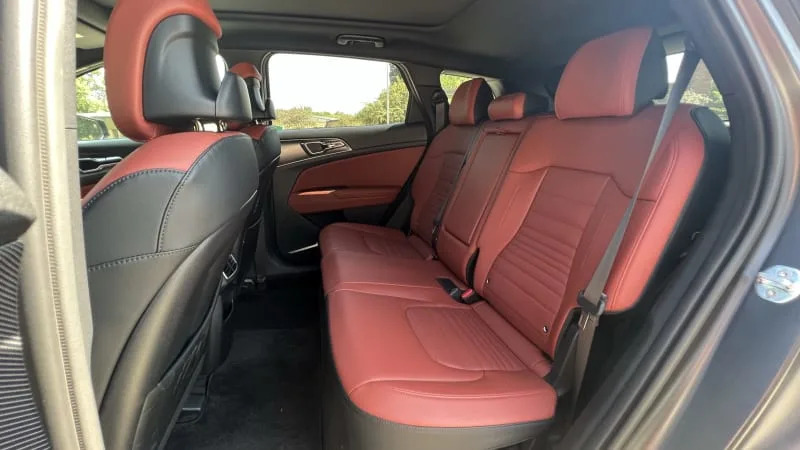

“You can tell a lot more effort went into making the Kia exciting to look at, both inside and out,” Snyder notes. “It has a more interesting shape, and you can get a matte paint finish (but don’t do that to yourself). The interior definitely feels more artistic, with more interesting things to see and touch.”
Inside, the Sportage makes a spectacular first impression. Climbing in, the car feels substantial and the materials and design present well, creating a warmer and more inviting space than the CR-V. At least some of that beauty is only skin-deep, though. We both struggled to find a good seating position in the Sportage — I found myself still making minute adjustments miles into my drive — but once settled, we had few complaints.
It helps that we’re Intimately fam”Iia’ with Kia’s infotainment system. While the Sportage isn’t boasting quite as much tech and safety as the company’s latest and greatest, there’s enough carryover from the EV6’s tech that we found ourselves right at home (read our long-term EV6 updates here). Unfortunately, the latest Hyundai & Kia infotainment suites have some technical and functional baggage that neither OEM has yet completely overcome. On the feature side, that translates to high-end infotainment suites that lack wireless Android Auto and Apple CarPlay. Both are available on lower Sportage trims, but due to some packaging weirdness, aren’t found on this loaded example.

More importantly, though, the Kia’s tech and infotainment presents a steeper learning curve than the Honda’s, which is remarkably conventional despite offering similar levels of tech and better top-to-bottom Android Auto/Apple CarPlay integration. Kia’s system requires toggling between different screens to hunt down even common functions. It’s a far sexier system than the Honda’s, but the user experience leaves more to be desired. Our test vehicle was also misbehaving, returning server errors when I tried to use the voice commands for navigation. This is the first such roadblock we’ve encountered with Kia’s nav system, so we’recontent to write it off to an issue with this particular car.
The same general theme continues throughout the Sportage’s cabin. The back seat looks good and offers USB-C charging ports conveniently affixed to the front seatbacks. The seats are reasonably comfortable and rear-seat legroom is virtually identical to that of the Honda’s both on paper (41.3 inches for the Sportage vs. 41.0 for the CR-V) and in practice. The Kia gives up just a touch more headroom thanks to the slope of its rear cabin, but the difference is less than a half an inch. There’s not much in the way of bonus storage back here, but the same is true of the CR-V, so that’s a wash.
The Sportage claimed best-in-segment cargo space when it debuted, and we can see why. The party end of the cabin favors the Kia here in terms of both volume (39.5 cubes for the Kia vs. 36.3 for the CR-V hybrid) as well as versatility. The CR-V hybrid’s rear seat sits several inches higher than the cargo floor when folded, meaning you don’t have a fully flat load floor. The Sportage has this, plus the extra versatility of a dual-level cargo floor that frees up extra space when the rear seat is raised. The Kia also has a spare tire; the CR-V hybrid does not.
The Kia presents a slightly better value proposition on the potency of its powertrain and versatility of its cargo area. Given their virtually equal price points, any advantage is worth leveraging, and Kia made sure the Sportage Hybrid punches as hard as its specs suggest. But looking beyond horsepower-per-dollar, the Kia fell just short of our winner in enough key areas to come in second place.

First Place: 2023 Honda CR-V Sport Touring Hybrid
Allow me to reiterate: This comparison was close. The Honda CR-V hybrid doesn’t do everything better than the Kia Sportage Hybrid, but it outshines the Korean in a few key areas that managed to put it over the top in our testing.
Let’s start with the powertrain. Compared to the muscular Kia, the CR-V hybrid’s specs come off as borderline anemic with 204 horsepower and 248 lb-ft of torque. Hybrid-electric system or not, 3,926 pounds is a lot of weight to shove down the road and about 200 horsepower isn’t a whole lot of motor to do it with. That it has to work a bit harder probably explains why the Honda’s highway mileage lags the Kia’s, offering just 34 mpg. In the city, though, the Honda flips the script. Its 40 mpg around-town figure brings its combined average up to 37 mpg – just 1 mpg behind the Sportage.
Put simply, though, the CR-V feels tighter and better executed. The little four-cylinder sounds great (which it needs to, because you hear a lot more of it) and Honda managed to program the CR-V’s hybrid “transmission” to feel like a traditional stepped automatic (read more about that in our CR-V first drive review). The CR-V’s acceleration is predictably weaker than the Sportage’s but it sounds and feels better getting up to speed. Passing power is lacking compared to the Kia, but it’s manageable with some forethought.
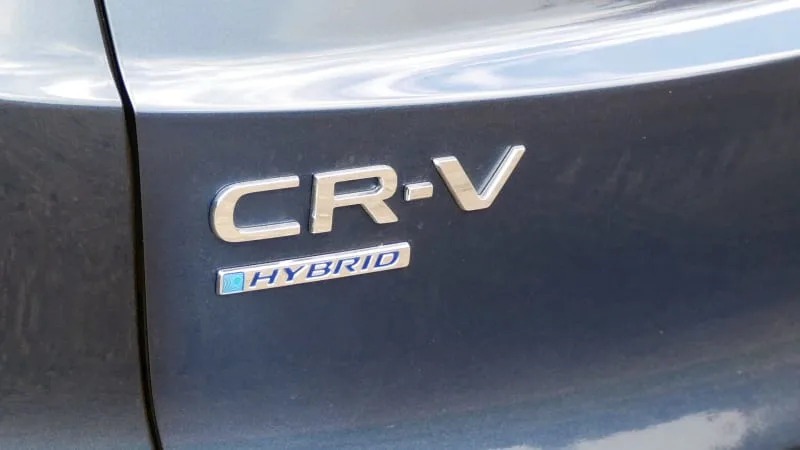

Through corners, the CR-V shines. Both it and the Sportage boast virtually identical curb weights, but the CR-V feels an order of magnitude more composed. Road and wind noise also present very differently. They’re clearer and more discernible in the Honda, but they don’t actually seem to be any louder, just better-enunciated. It’s not that the Honda lets more sound in, it just lets the same amount in without distorting it. And since Honda knows how to make four-cylinder engines sound good, that’s perfectly fine.
Highway driving in the CR-V is pleasant, but you’ll definitely pick up road noise on imperfect (or concrete) surfaces. Honda’s lane keeping tech is a tangible step behind Kia’s, imparting more of a sensation of ping-ponging between the lane edges than simply sticking to the middle. It works, though, and Honda’s one-size-fits-all approach to driver aids is more approachable than Kia’s. We’re hoping for serious improvements all around with the automaker’s forthcoming Honda Sensing 360, which should include a more comprehensive highway driving suite in the vein of Kia’s Highway Drive Assist 2.
Around town, the CR-V takes bumps and imperfections on the chin, with more harshness but less jiggle than the softer Kia. The little four-pot sounds great for a pedestrian engine, even when being pushed. Visibility around the front pillars is decent; we were able to navigate crowds of college students from University of Michigan’s move-in weekend without incident.
Since sound is just vibration you can hear, it stands to reason that the Honda feels as connected as it sounds. Bumps and cracks are more clearly communicated through the chassis to the driver and the corresponding impacts are less muted. The CR-V’s chassis responses are quicker and crisper, meaning that while the imperfections are more easily noticed, they’re also more rapidly dealt with. The languid responses of the Kia are nowhere to be found here, and the CR-V’s body feels more controlled and its actions more predictable. “Sporty” is pushing it, but the Honda’s composure is reassuring.
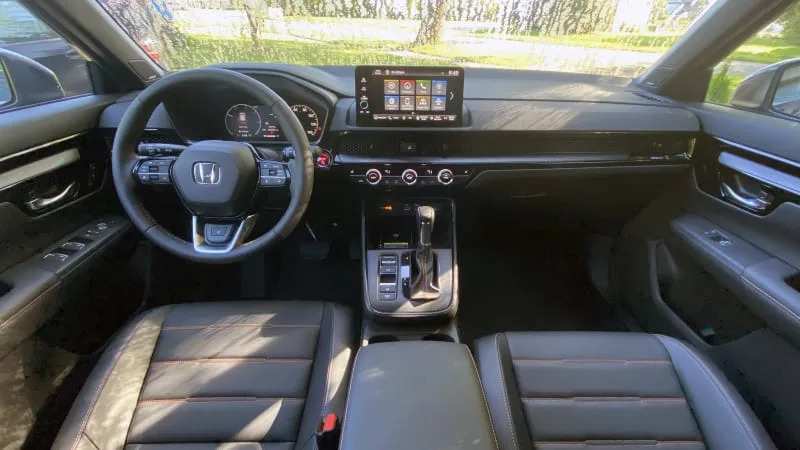
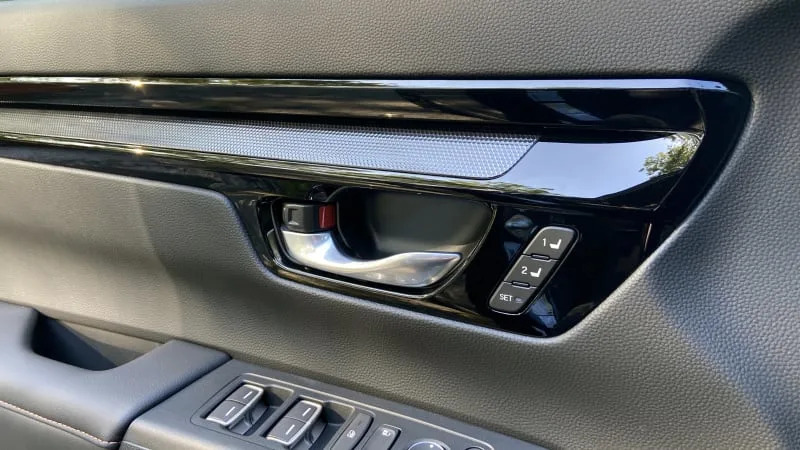
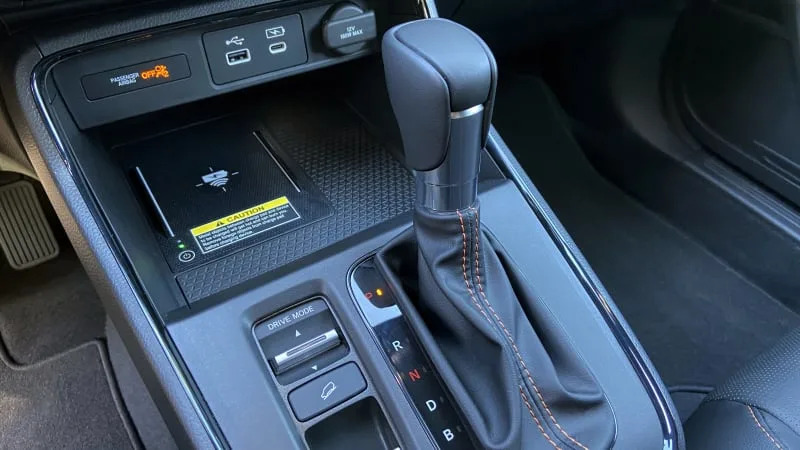
As we noted above, these cars are effectively 4,000 pounds apiece, but while the Kia feels every bit of its heft, the Honda manages to feel lither and more responsive. It responds quickly (and correctly) to inputs and lacks the Kia’s slightly more artificial and distant feedback. The crisper tuning of the CR-V’s suspension makes it rewarding enough to let us overlook the slight flintiness it exhibits over the Sportage. We’d rather feel it a bit more and get it over with faster, rather than having our love handles jiggled by a just-slightly-too-wallowy chassis.
The CR-V’s stoppers are perhaps the exception to the above rule; the brakes feel more artificial than the Kia’s during light applications, but that’s where any deficiencies end. “A little light at first,” Snyder notes, “but grabs with greater urgency, and provides more firmness as you dig into the pedal.”
Inside, the CR-V is a bit drearier to look at, but the monotonous black in our Sport Touring tester was at least broken up by some thoughtful brown contrast piping. Honda’s use of decades-old LCD-style temperature indicators still boggles my mind, but if you can look past that and the color palette straight out of a Henry Ford fever dream, you’ll find a functional, straightforward cockpit with plenty of creature comforts.
The seats were the real stars of the CR-V’s interior. Finding and storing a good seating position were both quick and easy. We also prefer the CR-V’s conventional infotainment system, which relies far less on the touch interface than Kia’s. Prominent temperature and fan control knobs sit beneath the screen within easy reach. It’s easy to simultaneously interact with the audio and climate control functions in the CR-V, whereas you’re mostly stuck with one or the other in the Sportage and its novel row of climate/infotainment shortcut buttons.

Honda’s convention-over-commotion theme continues rearward in the cabin. The somewhat drab but delightfully comfortable rear seat boasts dual charging ports not on the seatbacks as in the Kia, but on the rear of the console. I was pleased to note that the chrome accents on the front door switchgear was also used in the rear, and the door cards have “CR-V” embossed into them so that your rear passengers don’t forget what you bought to drive them around in. Ride-hail marketing at work?
Even farther back, we hit the cargo area. As previously noted, the CR-V and Sportage are working with similarly generous cargo volumes, but the once-crowned “Cargo King” is working from a disadvantage in this instance due to its lack of versatility and packaging of its hybrid battery. It still holds a lot of stuff, but the Sportage can hold more. However, we must point out that this is not the case with the gas-only CR-V EX and EX-L trim levels, which have a similar dual-level cargo floor and spare tire as the Sportage Hybrid. Those trims consequently have the same cargo volume as the Sportage.
The CR-V’s value proposition may not be obvious on paper, but as tends to be the case, Honda’s experience building mass-market cars shines through. The CR-V isn’t as flashy or interesting to look at as the Sportage, nor does it match the Kia on power, but despite its lack of panache, it’s still the one we’d pick.
